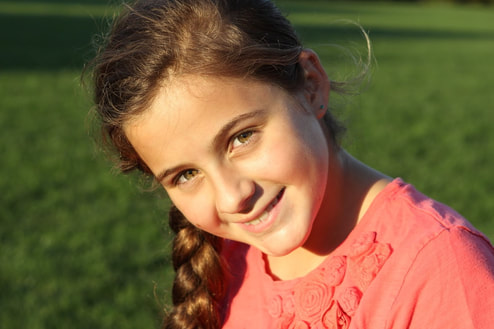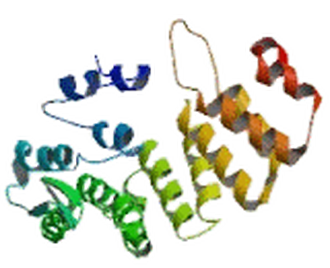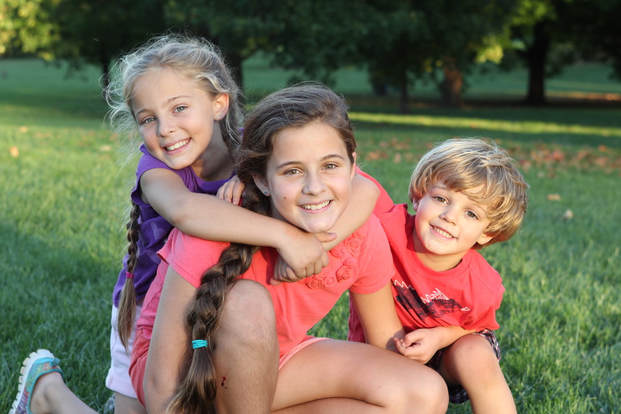An Unusual Medical Presentation

In December 2014, we discovered that our daughter had asymptomatic high blood sugar. At that time she was diagnosed with likely type 1 diabetes. However, her blood sugars were often normal, and she had no antibodies typically found in type 1 diabetes. We knew that she struggled with fatigue and endurance and had more headaches than our other children, but we didn't know why.
We contacted the University of Chicago Kovler Diabetes Center. It was there that Doctors Louis Philipson and May Sanyour tested our daughter's DNA for mutations that might cause unusual forms of diabetes. They made the discovery that she carried 2 different mutations in the WFS-1 gene. In May 2016 at age 11, our daughter was diagnosed with Wolfram-like disease, a non-classic form of Wolfram syndrome.
We contacted the University of Chicago Kovler Diabetes Center. It was there that Doctors Louis Philipson and May Sanyour tested our daughter's DNA for mutations that might cause unusual forms of diabetes. They made the discovery that she carried 2 different mutations in the WFS-1 gene. In May 2016 at age 11, our daughter was diagnosed with Wolfram-like disease, a non-classic form of Wolfram syndrome.
A Rare Diagnosis

As a pediatrician, I was surprised that I had never heard of Wolfram syndrome. As parents, my husband and I knew that all we wanted to do was help someone find a way to treat and cure it.
Since her diagnosis, we have researched WS and communicated with doctors and researchers, like Dr. Fumi Urano, who have the knowledge and ability to solve the Wolfram syndrome puzzle. There is no textbook to tell us how to treat our daughter, or how long she has before her pancreas and eyesight fail. Right now we know that if she can keep her blood sugars as normal as possible through diet and oral medication her cells will be less stressed, and hopefully she can preserve her pancreas and optic nerve function longer. We also know that there are treatments and possibly a cure on the horizon. This hopeful knowledge keeps us going.
Since her diagnosis, we have researched WS and communicated with doctors and researchers, like Dr. Fumi Urano, who have the knowledge and ability to solve the Wolfram syndrome puzzle. There is no textbook to tell us how to treat our daughter, or how long she has before her pancreas and eyesight fail. Right now we know that if she can keep her blood sugars as normal as possible through diet and oral medication her cells will be less stressed, and hopefully she can preserve her pancreas and optic nerve function longer. We also know that there are treatments and possibly a cure on the horizon. This hopeful knowledge keeps us going.
A Remarkable Attitude

When our daughter found out about her diagnosis, her response was, "Everyone has something, this is my thing." She knows that the treatments on the horizon could help her and many others. She continues to be diligent in keeping a low carb diet, taking supplements and medication, and checking her blood sugars.
Our daughter is committed to helping find a treatment and cure. Whether this involves more blood draws, tracking her blood sugar more closely in response to different medications, or fundraising, she is ready and willing to do it.
There are difficult days when she looks at us and says, "When will the cure be ready?" We answer that we will do our best to help researchers get it here as soon as they possibly can. We know nothing is certain in life, but we can be certain that we, along with many others, will keep working as hard as we can to develop more treatments and ultimately find a cure.
Our daughter is committed to helping find a treatment and cure. Whether this involves more blood draws, tracking her blood sugar more closely in response to different medications, or fundraising, she is ready and willing to do it.
There are difficult days when she looks at us and says, "When will the cure be ready?" We answer that we will do our best to help researchers get it here as soon as they possibly can. We know nothing is certain in life, but we can be certain that we, along with many others, will keep working as hard as we can to develop more treatments and ultimately find a cure.